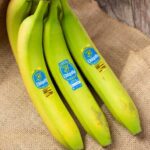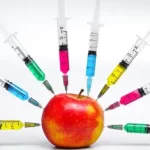Hydrox’s decision to go non-GMO not only marked a significant milestone for the company but also sent ripples throughout the cookie industry. As consumers become increasingly conscious of the ingredients in their food and demand greater transparency from manufacturers, the move towards non-GMO products has gained momentum. The shift towards non-GMO certification reflects a broader trend towards clean eating and a growing distrust of conventional agricultural practices. With concerns about the potential health risks associated with GMOs and glyphosate residues, consumers are seeking out alternatives that align with their values and priorities.
Hydrox’s embrace of non-GMO certification has resonated with consumers who prioritize health, sustainability, and ethical sourcing. By providing a cleaner, more transparent product, Hydrox has positioned itself as a leader in the emerging market for natural and organic foods. Moreover, Hydrox’s success has not gone unnoticed by industry insiders, with other food manufacturers taking note of the growing demand for non-GMO products. As Hydrox gains traction in the marketplace, competitors like Oreo may be forced to reevaluate their own ingredient sourcing and marketing strategies to remain competitive.
The rise of Hydrox and other non-GMO brands reflects a broader shift in consumer preferences and market dynamics. With sales of non-GMO foods on the rise and an increasing emphasis on health and wellness, the cookie industry is facing unprecedented challenges and opportunities. As, we delve into the impact of Hydrox’s decision to go non-GMO on consumer perception and market trends. From changing dietary preferences to shifting industry norms, we explore the implications of this groundbreaking move and its potential to reshape the cookie landscape for years to come. Join us as we navigate the evolving terrain of food production and consumption and uncover the forces driving the demand for non-GMO products.
The Growing Demand for Clean Label Products
In recent years, there has been a noticeable shift in consumer behavior towards seeking out products with clean labels. But what exactly does “clean label” mean, and why has it become such a significant trend in the food industry?
Clean label refers to products that contain minimal ingredients, free from artificial additives, preservatives, and other synthetic substances. Instead, clean label products emphasize natural, recognizable ingredients that consumers can trust and feel good about consuming. This trend has been driven by several factors, including concerns about health, sustainability, and transparency. Consumers are increasingly wary of the long-term effects of consuming artificial additives and GMOs, leading them to seek out alternatives that align with their values and dietary preferences. Moreover, clean label products are often perceived as healthier and more wholesome, appealing to those who prioritize nutrition and wellness.
By choosing products with clean labels, consumers feel empowered to make informed decisions about their health and the impact of their purchasing choices on the environment and society. Hydrox’s decision to go non-GMO and remove artificial flavors from its sandwich cookies reflects the growing demand for clean label products among consumers. By prioritizing quality ingredients and transparency, Hydrox has positioned itself as a leader in the clean label movement, appealing to a diverse range of health-conscious consumers. As the demand for clean label products continues to grow, food manufacturers are under increasing pressure to reformulate their products and adapt to changing consumer preferences. Companies that embrace the clean label trend stand to gain a competitive advantage in the marketplace, while those that resist risk falling behind.
Tips for Incorporating Clean Label Choices into Your Lifestyle
Making the switch to clean label products can seem daunting at first, but with a few simple strategies, you can easily incorporate healthier choices into your lifestyle. Here are some tips to help you navigate the aisles and make informed decisions:
Read ingredient labels carefully: Take the time to read and understand the ingredient list on product labels. Look for familiar, natural ingredients and avoid products that contain artificial additives, preservatives, and GMOs.
Choose whole foods whenever possible: Opt for whole, minimally processed foods like fruits, vegetables, whole grains, and lean proteins. These foods are naturally free from artificial additives and provide essential nutrients for optimal health.
Shop organic: When purchasing produce, dairy, and meat products, choose organic options whenever possible. Organic foods are grown and produced without synthetic pesticides, fertilizers, hormones, or GMOs, making them a cleaner, more sustainable choice.
Support transparent brands: Look for brands that prioritize transparency and openly disclose information about their ingredient sourcing and manufacturing practices. Support companies that are committed to using high-quality, ethically sourced ingredients and promoting food safety and sustainability.
Experiment with homemade alternatives: Instead of relying on packaged snacks and convenience foods, try making your own homemade versions using fresh, wholesome ingredients. Experiment with baking cookies, granola bars, and other treats using whole grains, nuts, seeds, and natural sweeteners.
Stay informed and advocate for change: Stay informed about current food issues and advocate for policies that promote transparency, sustainability, and consumer health. Join community organizations, sign petitions, and support initiatives that aim to improve food labeling and regulation.
By incorporating these tips into your lifestyle, you can make healthier, more sustainable choices and contribute to a cleaner, more transparent food system. Remember that every small change you make can have a positive impact on your health, the environment, and future generations. Embrace the journey towards clean label living and enjoy the benefits of nourishing your body and supporting a healthier planet.
The Future of the Clean Label Movement: Trends and Predictions
As the clean label movement continues to gain momentum, the future of the food industry is poised for significant transformation. Here are some trends and predictions that are shaping the future of clean label products:
Increased demand for transparency: Consumers are becoming increasingly discerning about the ingredients in their food and are demanding greater transparency from manufacturers. As a result, food companies will be under pressure to disclose more information about their ingredient sourcing, production methods, and supply chains.
Expansion of non-GMO and organic offerings: With growing concerns about the health and environmental impacts of GMOs and synthetic pesticides, the demand for non-GMO and organic products is expected to continue rising. Food manufacturers will need to respond to this demand by expanding their non-GMO and organic offerings and investing in certification programs.
Innovation in clean label ingredients: As consumer preferences evolve, there will be a greater emphasis on innovative, natural ingredients that deliver both health benefits and flavor. Expect to see an increase in products featuring superfoods, ancient grains, plant-based proteins, and other nutrient-dense ingredients.
Regulation and labeling standards: As the clean label movement gains traction, there will likely be increased scrutiny and regulation of food labeling practices. Government agencies may implement stricter standards for labeling claims such as “natural,” “organic,” and “non-GMO” to ensure accuracy and prevent misleading marketing tactics.
Mainstream adoption of clean label practices: While the clean label movement initially gained traction among health-conscious consumers, it is increasingly becoming mainstream. As awareness grows and clean label products become more widely available and affordable, expect to see a broader segment of the population embracing clean label practices.
Collaboration and partnerships: In response to consumer demand for cleaner, more transparent products, expect to see greater collaboration and partnerships within the food industry. Manufacturers, retailers, farmers, and other stakeholders will work together to promote sustainable, ethical food production practices and meet the growing demand for clean label products.
Overall, the future of the clean label movement looks promising, with continued growth and innovation expected in the years to come. By embracing transparency, sustainability, and consumer preferences, the food industry has the opportunity to shape a healthier, more sustainable future for all. Join us as we embark on this journey towards a cleaner, more transparent food system and a brighter tomorrow for generations to come.
Embracing a Clean Label Future
The rise of Hydrox as a non-GMO challenger to Oreo’s dominance marks a pivotal moment in the evolution of the cookie industry and the broader clean label movement. As consumers become increasingly conscious of the ingredients in their food and demand greater transparency from manufacturers, the demand for clean label products is on the rise. Hydrox’s decision to go non-GMO reflects a growing shift towards healthier, more sustainable food choices and underscores the power of consumer demand to drive positive change in the marketplace. As we look to the future, it’s clear that the clean label movement is here to stay, with trends pointing towards increased transparency, innovation, and collaboration within the food industry.
By embracing clean label practices, manufacturers have the opportunity to meet consumer preferences, promote health and wellness, and contribute to a more sustainable food system for generations to come. As consumers, we have the power to shape the future of food by making informed choices and supporting companies that prioritize transparency, sustainability, and ethical sourcing. Whether it’s choosing non-GMO products, opting for organic produce, or advocating for stricter labeling standards, every decision we make has the potential to create positive change and pave the way for a cleaner, healthier world. Join us in embracing the clean label movement and together, let’s build a brighter future where clean, transparent, and sustainable food choices are the norm. Together, we can create a world where everyone has access to nutritious, wholesome food that nourishes both body and soul.










